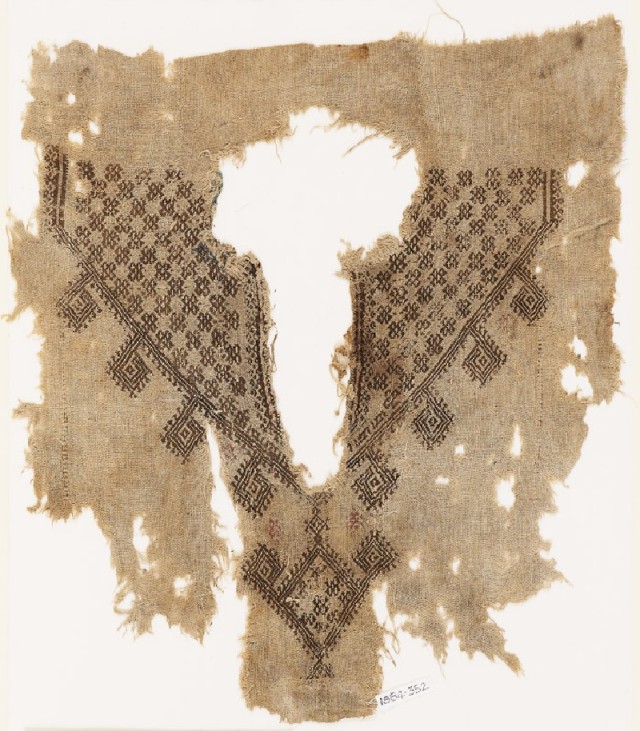Previously, I have been asked how do I finish the ends of the threads on my blackwork embroidery. I have not had the opportunity to look at the backside of a blackwork example in a history museum. So, I do not know what was historically accurate. This is not a topic that I have found online for documentation.
Based on my personal experience, I prefer to weave the ends of the threads into the blackwork pattern. By weaving, the pattern can look more complete and reversible on the backside, whereas knotting the ends leaves a blank space between to end points on the backside.
(The backside of today's experiment)
When I first began doing blackwork embroidery, I used Gutermann silk thread. On the linen fabric, I would count every third hole for a stitch. This created a small and thin, but tight pattern when embroidering, which made the tail ends easy to weave into the thread on the backside.
(Above is Gutermann silk thread on a boy's shirt, used for SCA youth combat)
Over the years, I have found that I prefer the twisted silk thread (soie perlee) for a variety of reasons, including that it creates a much bolder look with the embroidery. However, while using the twisted silk thread, I have been counting every fifth hole on the linen fabric to create larger patterns. By counting every fifth hole with this thread, the embroidery risks being slightly more loose when weaving the tail ends on to the backside.
(Above is untwisted silk thread: soie ovale)
For today's experiment, I created a simple sample using both the Gutermann and the twisted black silk threads. For one set, I knotted the ends. For the other set, I wove the ends into the pattern on the backside. I found that the starting knot on the Gutermann silk thread had to have a very large knot and was still easily capable of pulling through the fabric. This in turn could cause your embroidery pattern to unravel. The knot for the twisted silk thread was much easier to make large and did not pull through the linen as easily.
As I embroider clothes to be worn (including for my active children), I prefer to make something that will withstand the conditions of a washing machine. After briefly embroidering the sample, I put it into the washing machine to test out if any of the threads would unravel or bleed. I washed the sample on the hand wash cycle in cold water.
Here is a video of the experiment.
After the sample survived the washing machine, I was surprised to find that none of the threads had unraveled. Prior to putting the sample into the washing machine, I had my hesitations in regard to the Gutermann thread, since the knot could easily be pulled through the linen. Also, none of the threads bled. After the sample came out of the washing machine, I laid it out flat to air dry.












































